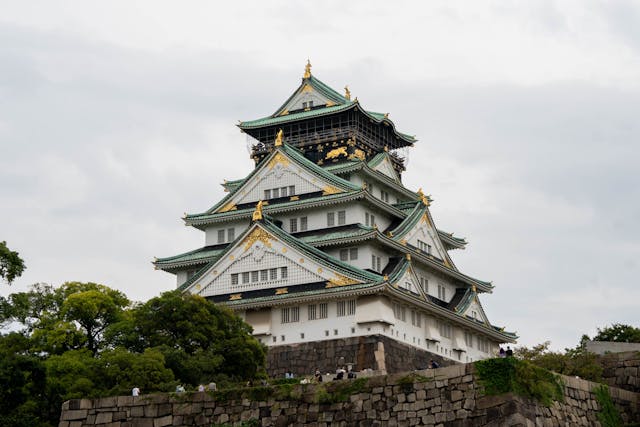
Why did the samurai class end? The samurai class were eliminated during the Meiji Restoration when Japan modernized in a very short period of time. Although, most of them just changed roles, rather than disappearing.
The samurai came out of a military class that had been formed in the Heian Period, 710 to 1185. Heian is the old name for Kyoto, which is where the capital was located from 794 to 1868. The capital of Japan was Kyoto for so long because the emperor and the imperial court lived there, but Japan was ruled by a warrior class, headed by the shogun, and they lived in Tokyo (known as Edo) from 1603. When the forces of Emperor Meiji overthrew the shogunate, the imperial court moved to Edo and it became the official capital. It was renamed as Tokyo 東京, which means 東 east and 京 capital.
In the beginning of the Heian Period, the emperor’s land was distributed among supporters who became a wealthy class of landowners. They needed to defend themselves against land grabs by other landowners, so they developed their own armies. The soldiers in these armies became known as samurai, from the Japanese word “saburau”, which means “to serve”. Over time, they evolved and created their own laws and code, known as bushidō. Bushi means warrior, and dō means the way. Bushido wasn’t really a compulsory set of laws and each clan had different versions of it. Samurai gradually rose in numbers and power until the ruled the whole country and they controlled the emperor. They stayed this way for hundreds of years. They have an image of being an honorable warrior class, and many were, but they were also a wealthy ruling class that controlled the country and the peasants. There were corrupt samurai, just as there were corrupt nobles in Europe, and some of the samurai were only interested in their own personal gain.
The samurai controlled Japan for hundreds of years, but they came to an end in the late 1860s. What happened? Once Tokugawa Ieyasu unified Japan in 1600, Japan was converted into a feudal system, with the samurai controlling most of the government and being bureaucrats. There was peace for over 200 years and the samurai didn’t really do much fighting. They still carried their swords and dressed as samurai, but their role was much more of a clerical one. This system worked fine and Japan went through an economic boom. People started moving to the cities, which also increased in size. The samurai became richer and more powerful.
All of this came to an end, starting in 1853. A US naval captain called Commodore Matthew Perry, was given instructions to open up Japan to American trade. Japan had been an intentionally isolated country, except for a few agreed upon cities, for hundreds of years. Perry sailed into Tokyo harbor with a fleet of heavily armed steam-powered warships. He threatened to blow up the city unless Japan was opened to American trade. It took a while, but it worked. However, this had some unforeseen consequences. The influx of trade brought in American goods and some American culture. But, it also showed the Japanese that they could not fight such a superior technologically armed force. The army and the navy needed to be reformed, which meant the country needed to be reformed, and the samurais that ruled the country were not able to do that. In 1868, the ruling samurais were overthrown by a faction that supported Emperor Meiji, and the reformation of the country began.
The problem with the samurai was two-fold. The army needed to be modernized and styled along Western lines. Samurai were used to fighting individual battles and a force of samurai would not be very effective against modern Western military tactics. And secondly, they held too much power and wealth. Therefore, the new Meiji government moved to dissolve the samurai class. It was basically a way of saying “out with the old …”. The samurai were not outright banned, but so many of their rights were removed, and so many of their sources of income were eliminated, that it became impossible to be a samurai. However, the government still needed a lot of their expertise and they didn’t want to create a force of enemies, so they did it slowly and gave the samurai chance to move into other businesses and lines of work. Many samurai became a new class of businessmen or government officials. They didn’t disappear, they just moved and changed roles. The samurai were the most educated class of people, and it made sense. By the 1930s, 35 % of businessmen were from the samurai class. And this is what I learned today.
Try these:
Sources
https://www.britannica.com/topic/samurai
https://en.wikipedia.org/wiki/Samurai
https://www.japan-guide.com/e/e2127.html
https://en.wikipedia.org/wiki/Emperor_of_Japan
https://en.wikipedia.org/wiki/Bushido
Photo by Mateusz Walendzik: https://www.pexels.com/photo/osaka-castle-during-a-cloudy-day-in-japan-29241379/
